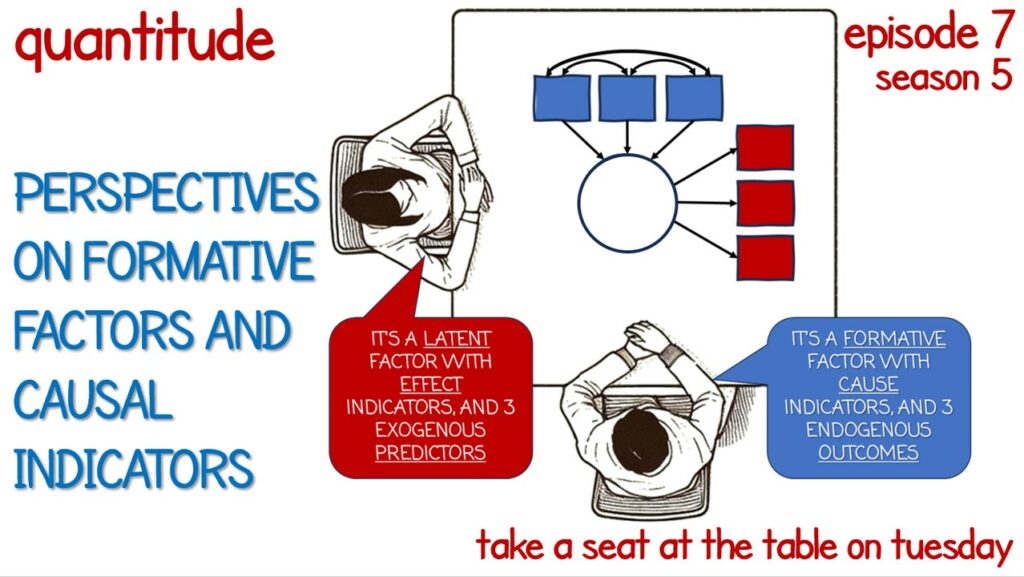In today’s episode, Patrick and Greg talk about the challenge of having causal indicators of formative factors within an analytical framework that is historically dominated by effect indicators and latent factors — and the critical importance of getting your arrows right. Along the way they also mention: self help books, habits, Hagrid and the giants, When Arrows Attack, The Handbook of SEM, the evil eye factor, defining your terms, the meaning of IS, minority reports, putting your fist through the office wall, lawyering, being deposed, How does it know?, doubling down, and bad JFK impressions.
Related Episodes
S2E21: Yes, Virginia…There ARE Latent Variables
S1E22: Factor Analysis: The Good, The Bad, & The Ugly
S1E13: How Do I Get Scale Scores? Weight, Weight… Don’t Tell Me!
S1E09: Grumpy Old Man & Village Idiot Argue About Reliability
Suggested Readings
Blalock HM Jr. (1963). Correlated independent variables: The problem of multicollinearity. Social Forces, 42(2), 233–237.
Blalock HM Jr. (1968). The measurement problem: A gap between the languages of theory and research In Blalock HM & Blalock AB (Eds.), Methodology in social research. New York: McGraw-Hill
Bollen, K. A. (2011). Evaluating effect, composite, and causal indicators in structural equation models. Mis Quarterly, 359-372.
Bollen, K. A., & Bauldry, S. (2011). Three Cs in measurement models: causal indicators, composite indicators, and covariates. Psychological methods, 16(3), 265.
Bollen, K. A., & Davis, W. R. (2009). Causal indicator models: Identification, estimation, and testing. Structural Equation Modeling: A Multidisciplinary Journal, 16(3), 498-522.
Bollen, K. A., & Diamantopoulos, A. (2017). In defense of causal-formative indicators: A minority report. Psychological methods, 22(3), 581.
Borsboom D, Mellenbergh GJ, & van Heerden J (2003). The Theoretical Status of Latent Variables. Psychological Review, 110(2), 203–219.
Diamantopoulos A (2011). Incorporating formative measures into covariance-based structural equation models. MIS Quarterly, 35(2), 335–358
Edwards JR (2011). The fallacy of formative measurement. Organizational Research Methods, 14(2), 370–388.
Edwards JR, & Bagozzi RP (2000). On the nature and direction of relationships between constructs and measures. Psychological Methods, 5(2), 155–174.
Howell RD, Breivik E, & Wilcox JB (2007a). Reconsidering formative measurement. Psychological Methods, 12(2), 205–218.
Lee N, Cadogan JW, & Chamberlain L (2014). Material and efficient cause interpretations of the formative model: resolving misunderstandings and clarifying conceptual language. Academy of Marketing Science Review, 4(1–2), 32–43.
MacCallum, R. C., & Browne, M. W. (1993). The use of causal indicators in covariance structure models: some practical issues. Psychological bulletin, 114(3), 533.

